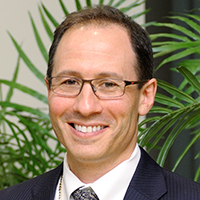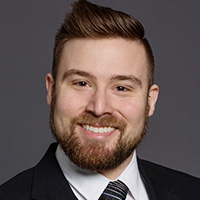CHAMPAIGN, ILLINOIS — Researcher Ryan Corey recently heard from a friend who teaches at a school where some of the students have hearing loss. The friend wanted to know if he had any ideas to help her communicate with these students while wearing a mask to slow the spread of COVID-19. Corey, who also has hearing loss, did not know what to tell her. So, he headed to the Illinois Augmented Listening Laboratory to look for solutions.

Andrew Singer, PhD
The team tested medical masks, disposable surgical masks, masks with clear plastic windows around the mouth, and homemade and store-bought cloth masks made of different fabric types and numbers of layers.
See a video explaining the research here.
The researchers used a special loudspeaker, custom built by industrial and enterprise engineering graduate Uriah Jones and shaped like a human head so that sound radiates as it would coming from a human mouth.
“We put the different masks onto the head-shaped loudspeaker and played the same sound for every test. We also placed the speaker onto a turntable to add a directional component to our data.”
–Ryan Corey, PhD
The team collected data from a mask-wearing human speaker, as well.

Which masks are best for speech? Image credit Ryan Corey.
“Using a real person makes the sounds less repeatable because we can’t say the same thing the same way every time. However, it does let us account for the real shape of the head and real movements of lips,” Corey said. “Even though these two data sets are a bit different, they both show which sound frequencies are most affected by mask-wearing and which masks have the strongest effects.”
Their data showed that all masks muffle the quiet, high-frequency sound generated when a person pronounces consonants. “Those sounds are already a challenge for those with hearing loss, with or without masks, and even become a challenge for those without hearing loss when you throw a mask into the mix.”
**Read the full story on University of Illinois News Bureau here.
Citation:
Corey, R. M., Jones, U., and Singer, A. C. (2020). “ Acoustic effects of medical, cloth, and transparent face masks on speech signals,” J. Acoust. Soc. Am. 148, 2371. https://doi.org/10.1121/10.0002279








This research is really wonderful and very in-depth. Thanks for sharing these insights. Even if masks are useful for protection against Covid, communication has become tricky. Many times other person is not clearly audible and lip movements are also not visible.
This article helps to understand the importance of disposable surgical masks and the benefit it can provide during speaking with someone. Please share such information with us in the future also.